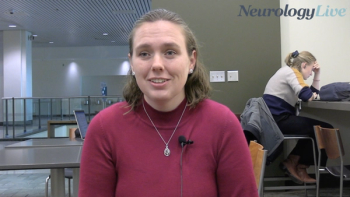
AB Science Gets Go-Ahead for Phase 3 Study of Masitinib in ALS
Key Takeaways
- AB Science's phase 3 study of masitinib for ALS involves 408 patients, focusing on those with normal disease progression.
- Previous phase 2/3 trials indicated masitinib's potential in slowing ALS progression, with significant benefits in the "normal progressor" cohort.
A new phase 3 study will explore masitinib's potential as treatment for ALS, aiming to enhance patient outcomes and confirm earlier promising results.
According to a new announcement from AB Science, the company has received approval from several European countries to initiate a new phase 3 study to confirm the therapeutic potential of masitinib, a tyrosine kinase inhibitor, as a treatment for amyotrophic lateral sclerosis (ALS). The approval follows protocol validation by the European Medicines Agency and the FDA authorization.1
The latest study, called AB23005, is expected to include 408 patients with ALS, more than double its previously completed phase 2/3 trial, in order to achieve high statistical power. In the study, patients entering with normal disease progression and no total loss of function, will be randomly assigned 1:1 to either masitinib or riluzole, the standard of care for ALS, for a 48-week treatment period.
In this prospective, double-blind, placebo-controlled, two-arm trial, normal disease progression is defined as a functional decline on ALS Functional Rating Scale (ALSFRS-R) of less than 1.1 points per month, while total loss of function is considered a score of at least 1 on each of the 12 items of ALSFRS-R. The trial, validated through discussions with European health authorities, will also allow for patients on edaravone to be included. As the study was being built, investigators identified that patients without rapid progression or without complete loss of function would be the most optimal study population who respond best to masitinib.
"Masitinib ALS study AB23005 has great potential because it’s design is based on strong clinical and preclinical data,” principal investigator Albert Ludolph, MD, PhD, chair of the department of neurology at the University of Ulm, said in a statement.1 "That is to say, results from the first 48-week Phase 2B/3 study, AB10015, which generated a strong hypothesis with significant survival of several months in the patient population being targeted in this confirmatory study, and also numerous preclinical studies that provide compelling insight into masitinib’s mechanism of action in ALS and its effect on biomarkers such as neurofilaments (NfL) by targeting mast cells and microglia."
Masitinib has been in development for several years and tested in other neurologic conditions like multiple sclerosis and Alzheimer disease. The new study is expected to have more than double the amount of patients than the previously completed phase 2/3 AB1005 study (NCT02588677), which had results published in the journal of Amyotrophic Lateral Sclerosis and Frontotemporal Degeneration in 2020.2
READ MORE:
The phase 2/3 trial, dubbed AB10015, comprised 394 patients who were randomly assigned 1:1:1 to either riluzole (100 mg/d) plus placebo or masitinib at 4.5 or 3.0 mg/kg/d. Following a blinded transition from phase 2 to phase 2/3, a prospectively defined two-tiered design was implemented based on ALSFRS-R progression rate from disease-onset to baseline. This approach selected a more homogenous primary efficacy population (“normal progressors”, ΔFS < 1.1 points/month), while concurrently permitting secondary assessment of the broader population.
In AB10015, the primary end point was decline in ALSFRS-R at week 48 (ΔALSFRS-R), with the high-dose “normal progressor” cohort being the prospectively declared primary efficacy population. For this population, masitinib-treated patients (n = 99) showed significant benefit over placebo (n = 102) with a ΔALSFRS-R between-group differs of 3.4 (95% CI, 0.65-6.13; P = .016), corresponding to a 27% slowing rate of functional decline. In addition, there were significant effects on secondary end points of ALSAQ-40, forced vital capacity, and time-to-event analyses.
In contrast to the normal progressor group, there was no treatment-effect seen on ALSFRS-R for the “normal and fast progressor” masitinib 4.5 mg/kg/d cohort (which showed a ΔLSM of 2.09 in favor of masitinib, P = 0.12), or either of the low-dose cohorts. In a subgroup analysis, which tested whether patient response to masitinib was influenced by baseline disease severity, results showed that initiation of masitinib at 4.5 mg/kg/d at a less severe stage of disease produced greater treatment-effect according to ΔALSFRS-R and time-to-event analysis.
In addition to the phase 2/3 trial, there have been several preclinical studies showing that masitinib can significantly reduce macrophage infiltration, prevent loss of terminal Schwann cells, and improve reinnervation of partially denervated plantar muscles. Recent pharmacological data show that mast cells infiltrate the degenerating spinal cord in ALS models and patients, with masitinib demonstrating a protective effect and reducing blood neurofilament light (NfL) levels in an EAE model.
REFERENCES
1. AB Science has received approval from several European countries to initiate the confirmatory phase 3 study of masitinib in ALS. News release. July 24, 2025. Accessed July 24, 2025. https://www.globenewswire.com/news-release/2025/07/24/3120751/0/en/AB-Science-has-received-approval-from-several-European-countries-to-initiate-the-confirmatory-phase-3-study-of-masitinib-in-ALS.html
2. Mora JS, Genge A, Chio A, et al. Masitinib as an add-on therapy to riluzole in patients with amyotrophic lateral sclerosis: a randomized clinical trial. Amyotrophic Lateral Sclerosis and Frontotemporal Degeneration. 2020;21:1-2. doi: 10.1080/21678421.2019.1632346
Newsletter
Keep your finger on the pulse of neurology—subscribe to NeurologyLive for expert interviews, new data, and breakthrough treatment updates.



















